-
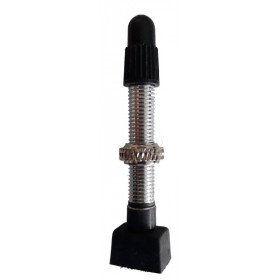 New productTubeless presta valve
New productTubeless presta valve- €3.99
-
 New productRim tape for road bike Schwalbe
New productRim tape for road bike Schwalbe- €2.49
-
 New product -35%Michelin Lithion tire
New product -35%Michelin Lithion tire- €11.04
- €16.99
-
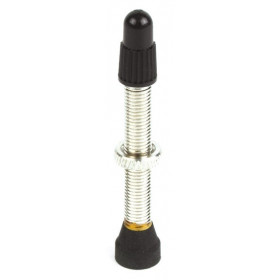 New productNotubes tubeless presta valve 35 mm X2
New productNotubes tubeless presta valve 35 mm X2- €13.80
-
 New product700x 23 tire Michelin Speedium 2
New product700x 23 tire Michelin Speedium 2- €28.99
-
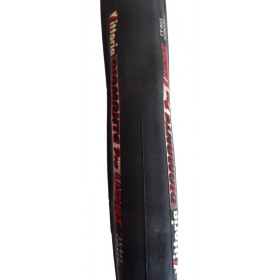 New productVittoria Diamante Pro Light 700x23c tire
New productVittoria Diamante Pro Light 700x23c tire- €29.99
-
 New productHutchinson ATOM Comp tire 700x23c
New productHutchinson ATOM Comp tire 700x23c- €24.99
-
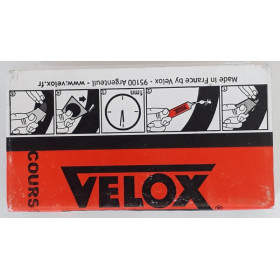 New product -50%Road bike patches Velox
New product -50%Road bike patches Velox- €2.25
- €4.50
-
 New product -43%Kenda Koncept tire 700x23c 23-622
New product -43%Kenda Koncept tire 700x23c 23-622- €9.06
- €15.90
-
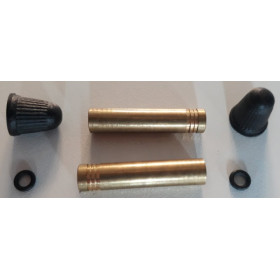 New product -50%Rigida 2 valves extension presta 28 mm
New product -50%Rigida 2 valves extension presta 28 mm- €3.00
- €5.99
-
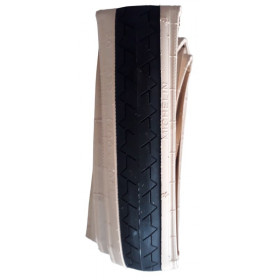 New productMichelin Performer tire 700x20c
New productMichelin Performer tire 700x20c- €18.99
-
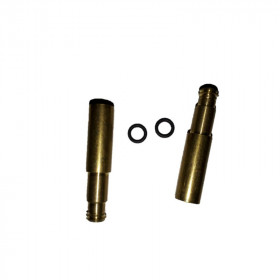 New product2 presta valve extensions 17 mm
New product2 presta valve extensions 17 mm- €3.90
-
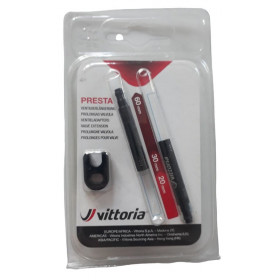 New productPresta valve extensions Vittoria 30 mm
New productPresta valve extensions Vittoria 30 mm- €3.25
-
 New product -35%Schwalbe Ultremo Aqua tire 700x23C
New product -35%Schwalbe Ultremo Aqua tire 700x23C- €32.49
- €49.99
-
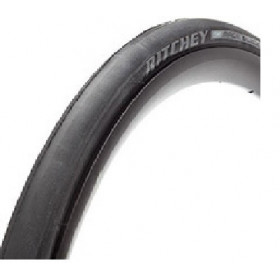 New productRitchey comp race slick road tire 700 x 23
New productRitchey comp race slick road tire 700 x 23- €14.90
-
 More detailsNew product -35% Out-of-StockMichelin Pro race 3 tire
More detailsNew product -35% Out-of-StockMichelin Pro race 3 tire- €17.54
- €26.99
-
 More detailsNew product Out-of-StockMichelin Pro race tire
More detailsNew product Out-of-StockMichelin Pro race tire- €22.99
-
 More detailsNew product Out-of-StockMavic Yksion Pro Griplink 700x25 tire
More detailsNew product Out-of-StockMavic Yksion Pro Griplink 700x25 tire- €34.99
-
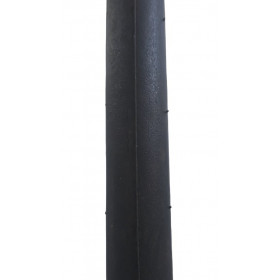 More detailsNew product -41% Out-of-StockSchwalbe Durano S tire 700 x 23c
More detailsNew product -41% Out-of-StockSchwalbe Durano S tire 700 x 23c- €23.59
- €39.99
-
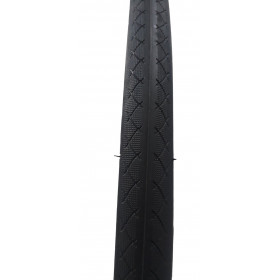 More detailsNew product -55% Out-of-StockVittoria Zaffiro Pro 700x23c tire
More detailsNew product -55% Out-of-StockVittoria Zaffiro Pro 700x23c tire- €11.25
- €25.00
-
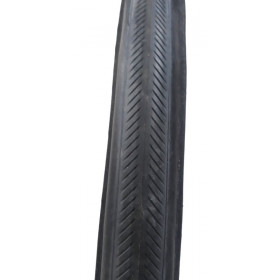 More detailsNew product -50% Out-of-StockMavic Yksion Pro 700x23 tire
More detailsNew product -50% Out-of-StockMavic Yksion Pro 700x23 tire- €42.50
- €85.00
Showing 1-21 of 21 item(s)
Road bike tire: features, selection, and specifics to know
A road bike tire is much more than just a rubber ring: it influences the cyclist's performance, comfort, and safety. Whether you enjoy long rides on asphalt or are a passionate competitor, choosing the right road bike tires is essential. Here's everything you need to know to make the right choice.
1. What is a road bike tire used for ?
A road bike tire plays a fundamental role in a cyclist's overall performance. It's the single point of contact between the bike and the ground, making it crucial for power transmission, stability, and comfort. Designed specifically for use on asphalt, road tires are distinguished by their thinness, lightness, and low rolling resistance. These characteristics maximize efficiency: less friction = more speed for the same effort.
Thanks to their reduced contact patch and optimized rubber compound, road tires provide excellent grip on both dry and wet surfaces, while allowing for a smooth and precise ride. This is particularly important in fast corners or on technical descents where grip is essential for safety.
Furthermore, the tire's structure—often reinforced to limit the risk of punctures—offers a good compromise between flexibility and durability. Whether racing or training, this type of tire promotes rapid acceleration, high-speed stability, and good riding comfort, especially when paired with a stiff and lightweight road bike wheel.
The road bike rim also plays a complementary role: it determines the setup (inner tube, tubeless, tubular), cross-section compatibility, and overall aerodynamics. A good match between tire, rim, and inflation pressure enhances the bike's performance and adapts its handling to the cyclist's goals: racing, training, touring, or long-distance endurance.
The road bike tire is much more than a simple consumable. It is a strategic element that directly influences ride quality, pedaling efficiency, and the feeling of speed. Choosing the right model and adapting it to your practice lays the foundations for a responsive, comfortable and reliable bike.
2. The main characteristics of a road bike tire
Choosing the right road bike tire isn't just a matter of brand or price. Several technical criteria determine the tire's performance on the road, its efficiency, comfort, and durability. Here are the main elements to consider to guide your choice based on your riding style and expectations.
Tire width
The width of a road bike tire, generally expressed in millimeters (23, 25, 28, or even 32 mm), has a direct impact on comfort, stability, and performance. A narrower tire (23 mm) is lighter and offers low rolling resistance, making it suitable for racing on smooth roads. However, it is stiffer and less forgiving of road surface irregularities.
Conversely, a wider road tire (25 mm, 28 mm, or more) provides greater comfort thanks to better damping capacity. It allows you to ride at lower pressures, which improves grip and reduces muscle fatigue over long distances. This type of tire is ideal for cycle touring, long rides, or on poor road conditions.
It is essential to check the compatibility of the road bike rim with the tire width: not all rims accept wide sections.
TPI (threads per inch)
TPI (threads per inch) refers to the density of the tire casing, i.e., the weave of the nylon or cotton threads under the rubber. A road bike tire with a high TPI (120 TPI or more) is more flexible, lighter, and offers better performance. These tires are often favored in racing for their responsiveness and steering precision.
On the other hand, a lower TPI (60 to 90) makes the tire stiffer but also more robust, making it better suited for urban or everyday use. It's also a good choice for those who prioritize longevity and puncture resistance.
Rubber compound
The rubber compound affects the grip, flexibility, and durability of a road bike tire. Manufacturers often offer rubber compounds (dual-compound or tri-compound) to combine several qualities in a single tire:
- A softer compound on the edges improves cornering grip, ideal for downhills and tight turns.
- A harder compound on the center strip improves wear resistance and extends tire life, especially during intensive use.
The choice of compound depends on your priorities: maximum grip for strong and safe riding, or increased longevity to limit tire replacements.
Puncture protection
A puncture can quickly ruin a ride. To address this, many road bike tires incorporate one or more protective layers between the tread and the inner tube. These reinforcements are made of Kevlar, high-density nylon, or special rubber.
- Advantages: they significantly reduce the risk of punctures due to glass shards, nails, or sharp debris.
- Potential disadvantages: a slight increase in weight and a stiffer feel can be experienced, especially with entry-level tires.
This type of road bike tire is particularly recommended for daily commuting, long distances, and touring where reliability takes precedence over pure performance.
3. Types of road bike tires
The choice of road bike tire depends as much on riding style as on the type of tire used. There are three main types of road tires, each with its own advantages, limitations, and technical specifications. Whether you're a casual, regular, or competitive cyclist, it's essential to understand these differences to optimally equip your road bike wheel.
Tubed tires: the classic, reliable, and economical solution
The tubed tire remains the most common tire assembly today. It consists of two separate components: the outer road tire and the inner tube. The inner tube is inflated to the desired pressure and holds the tire firmly on the road bike rim.
Advantages:
- Quick and easy installation, even at the roadside in the event of a puncture.
- Wide selection of tires and tubes in all price ranges.
- Easy to maintain and replace, ideal for recreational cyclists or daily commuters.
Disadvantages:
- More susceptible to punctures, particularly pinch flats (when hitting a curb or bump).
- Less comfortable and less efficient than tubeless tires at equivalent pressure.
Tubeless tires: comfort, performance, and safety without a tube
As the name suggests, a tubeless tire works without an inner tube. It mounts directly onto a tubeless-ready, sealed rim with a specific rim strip. A sealant is added inside the tire to ensure a seal and seal small punctures.
Advantages:
- Significantly reduced risk of pinch flats (especially on uneven terrain or damaged road surfaces).
- Ability to ride at lower pressure, which increases comfort and grip without sacrificing performance.
- The sealant instantly seals small holes, often preventing complete shutdowns in the event of a puncture.
Disadvantages:
- More complex installation, sometimes requiring a compressor or high-pressure road bike pump for the initial inflation.
- Slightly higher cost (tires, rims, tubeless valves, sealant).
- Regular maintenance required: the fluid should be changed every 3 to 6 months.
Tubeless tires are increasingly appealing to cyclists and long-distance tourers looking for comfort, reliability, and optimized performance.
Tubulars: the Pure performance choice for competitors
A tubular tire is a completely different construction from other road bike tires. It integrates the inner tube into the tire's structure, which is then glued or sewn-glued directly onto a specific road bike rim called a tubular rim.
Advantages:
- Ultra-lightweight, ideal for competitions and mountain races.
- Superior performance thanks to very low rolling resistance.
- Excellent ride feel and high level of comfort at high pressure.
Disadvantages:
- Technical assembly and disassembly: it takes time, precision, and sometimes several hours to properly glue a tubular tire.
- Complicated on-road repairs in the event of a puncture. You generally need to carry a complete spare tubular.
- Requires specific wheels that are not compatible with conventional or tubeless tires.
Tubular tires remain the preferred choice for professional riders and enthusiasts seeking maximum performance, but they are less suited to everyday or all-around use.
The choice between inner tube, tubeless, and tubular depends primarily on your riding style, your budget, and the type of road bike wheels you use. Each technology has its own advantages and specific features, but in all cases, a well-chosen road bike tire radically transforms your riding experience.
4. Properly inflate your road bike tire
Inflation is a crucial step that is too often overlooked by cyclists. However, road bike tire pressure directly influences three fundamental factors: comfort, performance, and tire lifespan. Improperly adjusted pressure can compromise your performance, prematurely wear out your tires, and, above all, significantly increase the risk of punctures.
Why the right pressure is essential
- Overinflated: An overinflated road bike tire becomes hard and loses its absorption capacity. Every bump in the road is transmitted to the handlebars and saddle, making riding uncomfortable, even painful, over long distances. Furthermore, an overly tense tire can bounce on the road instead of staying flat, reducing grip, especially when cornering or on wet roads.
- Underinflated: Too low a pressure increases the contact surface with the asphalt, generating more friction and therefore less performance. But above all, the tire becomes more vulnerable to pinching (the inner tube is crushed between the road bike rim and an obstacle), leading to a sudden puncture, particularly on uneven or cobbled surfaces.
How to adjust the ideal tire pressure
Several factors influence the optimal tire pressure for a road bike:
- Rider's weight: the heavier you are, the higher the tire pressure should be to prevent tire collapse.
- Tire width: a 23 mm tire will require higher tire pressure than a 28 mm tire. Wider tires tolerate lower tire pressures while still maintaining good performance.
- Tire type: tubeless tires can be inflated to lower pressures without the risk of pinch flats, which improves comfort. Tubular tires, on the other hand, often support very high pressures (up to 10 bar or more).
- Road conditions: On smooth, dry surfaces, a higher tire pressure is advantageous. Conversely, on wet, damaged, or granular surfaces, it's better to reduce the pressure slightly to optimize grip and comfort.
Using a good road bike pump
To accurately control and adjust pressure, a road bike pump with an integrated pressure gauge is essential. This type of pump allows you to inflate your tires to the exact pressure recommended by the manufacturer (indicated on the tire sidewall), expressed in bars or psi. There are several types of pumps:
- Floor pump: ideal for home use, it allows for fast and precise inflation thanks to its large air volume and pressure gauge.
- Emergency mini-pump: Lightweight and compact, it attaches to the frame or fits in a bag. It is useful in case of a puncture on the road, but less precise.
- CO2 pump: Very practical for ultra-fast inflation, especially during races, but is single-use and does not provide precise pressure control.
Some indicative benchmarks
| Tire width | Light cycling pressure (≤ 65 kg) | Average cycling pressure (65-80 kg) | Heavy cyclist pressure (≥ 80 kg) |
|---|---|---|---|
| 23 mm | 6.5 – 7 bar | 7.5 – 8 bar | 8 – 8.5 bar |
| 25 mm | 5.5 – 6.5 bar | 6.5 – 7.5 bar | 7.5 – 8 bar |
| 28 mm | 4.5 – 5.5 bar | 5.5 – 6.5 bar | 6.5 – 7.5 bar |
These values should be adjusted according to the type of road bike wheel, the tire model, and your personal experience.
Proper inflation, adapted to your riding style and body type, improves pedaling smoothness, safety, and riding pleasure. A high-performance road bike tire will only reach its full potential if it is properly inflated—a small maintenance step, but a big impact on your experience.
5. When should you change your road bike tire ?
Even the best road bike tire eventually wears out. Riding with a worn tire puts you at risk of frequent punctures, loss of control when cornering, and even accidents. To maintain good performance and ensure your safety, it's crucial to spot signs of wear before it's too late.
Visible signs of a worn tire
Here are the main indicators that a road bike tire is at the end of its life:
- The tread is smooth or cracked: A tire whose rubber has been overused loses its original texture. The small patterns meant to improve grip disappear, and the surface becomes smooth or even cracked. This impairs road handling, especially on wet or granular surfaces.
- Cuts, gouges, or bulges: Micro-debris, glass, or stones can cause damage to the tire casing. If you observe abnormal bulges (bulges) or deep cuts, the tire no longer offers good structure, and the risk of explosion becomes real.
- Hardened or sticky rubber: Rubber that has lost its natural flexibility, particularly over time or storage in an unsuitable environment, becomes rigid. This significantly impairs grip, even in dry conditions, and increases the risk of slipping.
- Noticeable loss of grip: If you feel your road bike tire slipping easily when cornering or braking, even on dry surfaces, this is a sign that the rubber is too worn to ensure good handling.
- Appearance of the textile weave: On some models, when you start to see the carcass (nylon or cotton threads) appear through the rubber, this means the tire is at the end of its life.
The average lifespan of a road bike tire
The lifespan of a road bike tire depends on several factors:
- Tire type: a lightweight, high-performance tire (high TPI, soft compound) will wear out faster than a reinforced or touring tire.
- Riding conditions: clean or damaged roads, dry or wet weather, ambient temperature.
- Riding style: smooth or aggressive pedaling, heavy braking, urban commuting with frequent acceleration, etc.
Maintenance: A tire that is properly inflated using a road bike pump with a pressure gauge, without under- or over-inflation, will wear more evenly.
On average:
- A rear tire (subject to more stress) lasts between 2,000 and 4,000 km.
- A front tire can last 4,000 to 6,000 km, or even longer on robust models.
Why change your tires on time ?
Riding with worn road bike tires risks:
- Reduced grip, especially on descents, turns, or on wet surfaces.
- Repeated punctures, which can occur at the worst possible time, far from home.
- Premature wear of the road bike inner tube, or even the road bike rim if the tire becomes deformed or bursts.
Changing your road bike tires on time therefore means:
Maintaining your safety
Optimizing your performance and comfort
Avoiding unnecessary expenses on other wheel components
To avoid unpleasant surprises, inspect your tires every 500 to 1,000 km, and always keep a spare tire or tube ready in your bag or repair kit.
Conclusion
The road bike tire is a central component of your bike. From width and mounting style to puncture protection and pressure, every detail counts. Consider your riding style, comfort preferences, and riding level to choose the right model. Also, make sure your road bike rims, inner tubes, and pump are compatible and efficient for an optimal experience.
Additionnal informations :
Best road bike tire
